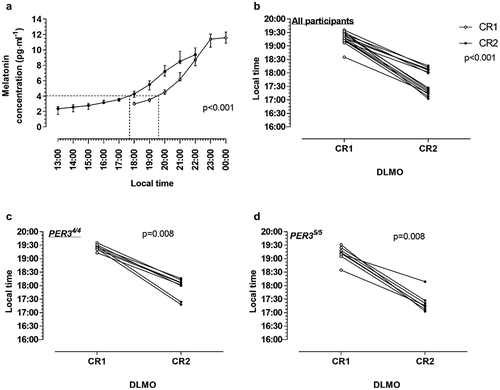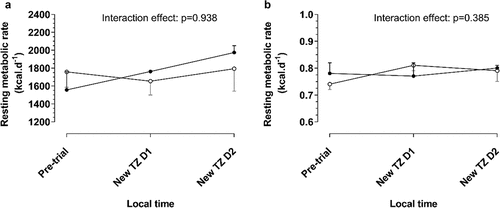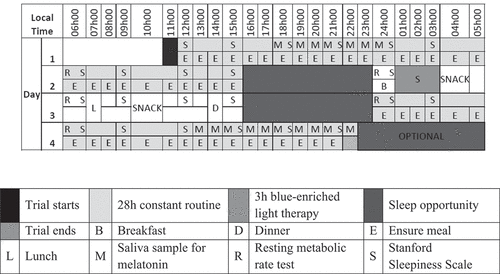Figures & data
Table 1. Participant characteristics measured prior to the trial.
Table 2. Sleep characteristics of the PER34/4 and PER35/5 groups during the first (SO1) and second (SO2) sleep opportunities.
Figure 2. Changes in perceived sleepiness levels during constant routine (CR) 1, first day in new time zone (TZ) and CR2, as measured by the Stanford Sleepiness Scale in the PER34/4 and PER35/5 groups. Data are presented as median with interquartile ranges. Significance was determined using mixed effects linear regression models.

Figure 3. Changes in hourly salivary melatonin concentration and dim light melatonin onset (DLMO) during constant routines (CR) 1 and 2, respectively. A and B: All participants, C: PER34/4 group and D: PER35/5 group. Data are presented as median with interquartile ranges (A) or individual data points (B-D). The dotted lines indicates DLMO time for CR1 and CR2 at the DLMO threshold value of 4 pg⋅ml−1. Significance was determined using Wilcoxon matched pairs test.

Figure 4. Changes in resting metabolic rate (A) and respiratory exchange ratio (B) measured before the trial and at 08h00 on days 1 and 2 in the new time zone. TZ D1 and D2: time zones days 1 and 2 respectively. Data are presented as median with 95% confidence intervals. Significance was determined using mixed effects linear regression models.


